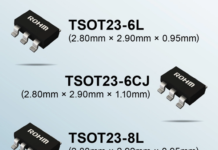
Versatile new Residual Current Monitors from Danisense feature user-selectable settings & 70mm aperture
Fluxgate current measurement provides enhanced accuracy & stability
- Measure DC and AC residual currents from 30mA to 2Arms at up to 100kHz
- Compliant with new norm IEC62020-1 saving time and periodic checks
- Best-in-class stability and accuracy
Danisense has launched its highly versatile series RCMH070IB+ Residual Current Monitor (RCM). Suitable for monitoring the residual currents in electrical power systems without the need for fast system shutdown, the Type B/B+ RCM can measure DC and AC residual currents from 30mA to 2Arms at frequencies of up to 100kHz, suiting it to a wide range of industrial applications, loads and generation sources. Significantly, the new RCM is complaint with the updated norm IEC62020-1. This means that it can used for remote monitoring without the need to perform periodic onsite checks.
Featuring a 70mm primary cable / busbar aperture and user-selectable settings for frequency range, integration time and rated residual operating current, the RCMH070IB+ RCM product also features an analogue 4-20mA output. This represents the real-time True RMS (TRMS) value of the measured residual current for interfacing to, for example, a PLC. Additionally a free potential relay output (NO / NC) with user-selectable rated residual current limit can be used to provide a warning or even system shutdown if the TRMS residual current measurement exceeds the preset value. An LED provides a visual indication of the status of the relay output. Built-in test and external test controls are provided for regular testing of the RCM. The RCMH070IB+ requires only a single 24Vdc power supply.
Comments Loic Moreau, VP marketing at Danisense: “These new RCMs use our Fluxgate current measurement technology with fixed excitation frequency to provide enhanced accuracy and stability. Applications include condition-based monitoring of insulation health; high voltage insulation testing; mission-critical installations in data centres and medical facilities; DC power systems and high frequency loads.”



















